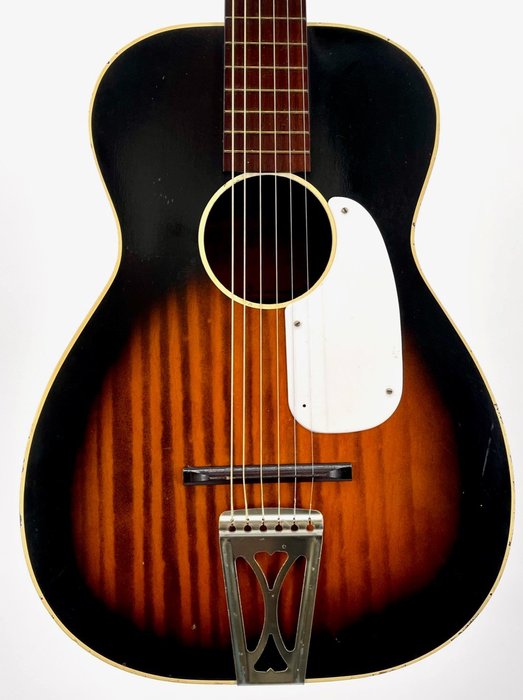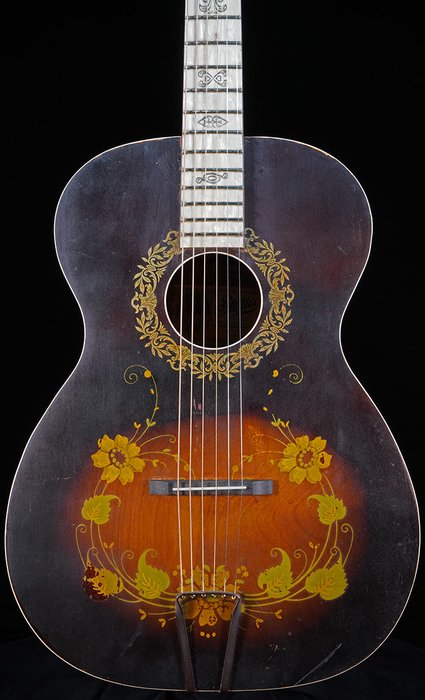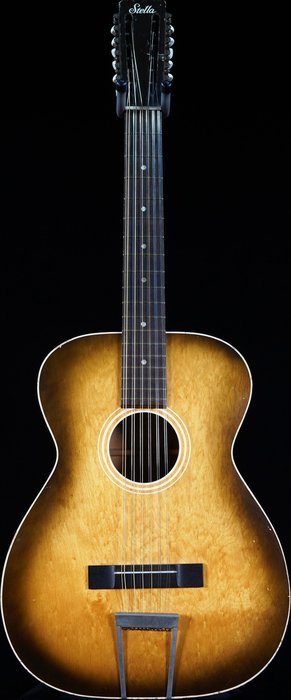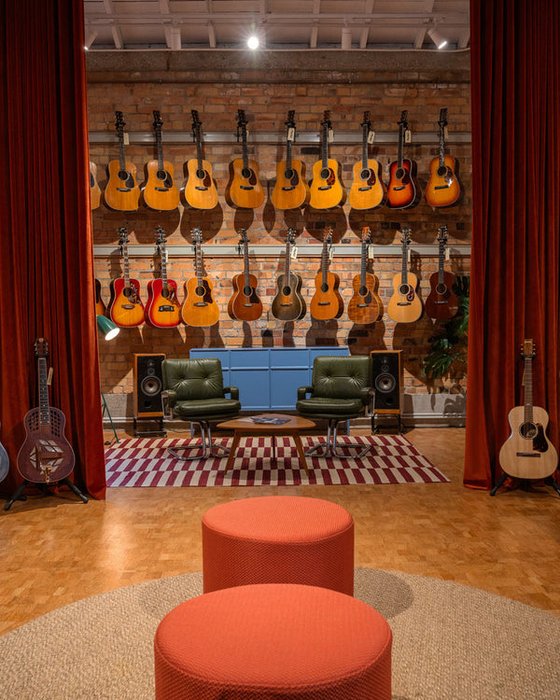Every time I strum the strings of my Stella Harmony acoustic guitar, I’m transported back to a summer afternoon decades ago, when my fingers first became acquainted with its vintage frets. The sound—warm, resonant, and slightly raw—was unlike any modern instrument I’d played. For many players, a Stella Harmony becomes far more than a guitar; it’s a gateway into the roots of American music. Over years of playing and research, I have developed deep respect for the craftsmanship and distinctive identity of Stella guitars, as well as their impact on the evolution of fingerstyle and blues traditions. This article examines the unique features, historical context, and present-day value of the Stella Harmony acoustic guitar, offering an objective, experience-based evaluation for musicians and collectors alike.
1. What Is the Stella Harmony Acoustic Guitar?
Key Features and Unique Qualities

The Stella Harmony acoustic guitars, especially during their heyday from the 1930s through the 1970s, were characterized by accessible materials and robust, pragmatic design. Notably, most models—including the well-regarded Stella H-929—featured all-birch construction and distinctive ladder bracing. Unlike modern X-bracing, ladder bracing produces a unique, mid-forward tone with punchy projection, which was especially suited to blues and folk genres favored by the era’s working musicians.
These guitars were engineered to be affordable: in 1956, a typical Stella cost roughly $20 to $25—less than one-tenth the cost of a Martin or Gibson. Yet their affordability did not entirely preclude quality. Original production methods prioritized simple durability; finishes were thin, and appointments modest, yet the resulting tonal character—warm, boxy, and soulful—has become valuable for authentic period sound. However, there are objective limitations: the all-birch build and ladder bracing result in a sound with less overtone complexity and sustain than higher-end instruments. Furthermore, aging birch is susceptible to cracking and warping if exposed to humidity extremes, and playability is often compromised by high action and a lack of truss rod adjustment. These factors are essential considerations for any player or collector evaluating a Stella Harmony’s functional and aesthetic appeal today.
2. Who Made Stella Harmony Acoustic Guitars Famous?
Legendary Players and Their Impact

Many iconic blues and folk musicians contributed to Stella Harmony’s lasting reputation by wielding these guitars as sonic vehicles for emotion and narrative. Legendary players such as Lead Belly, Robert Johnson, and Mississippi John Hurt made compelling recordings using Stellas, capitalizing on their bold, cutting sound—often in the face of less-than-ideal technical setups. As Lead Belly once said, “If you want to play the blues, you need to let the guitar cry,” and the Stella’s bright timbre and direct attack fit the music’s demands.
During the folk revival of the 1950s and 1960s, artists like Joan Baez and Woody Guthrie embraced Stella guitars for their accessibility and ability to amplify vocals on stage. Their Stellas became tools for social commentary, storytelling, and protest songs, cementing the instrument’s image as the “people’s guitar.” As documented on resources about Stella guitar tone, the instruments’ clear but slightly metallic sound lent itself to slide guitar techniques, and allowed players to be heard, even without amplification.
However, players also faced challenges comparable to the guitar’s virtues: the same high action and unrefined fretwork that gave Stella guitars their strong projection could make intricate modern fingerstyle or fast single-note lines physically demanding. Such drawbacks are cited among veteran restorers and referenced in detailed guides to vintage acoustic playability. In sum, Stella Harmony earned lasting fame not because it was technically perfect, but because it facilitated a distinctive sound and story, embraced by working musicians who shaped genres from blues to folk.
3. When Did Stella Harmony Guitars Dominate the Scene?
Evolution Through the Decades

The Stella name dates back to the early 1900s, originally produced by the Oscar Schmidt Company, but its most prolific period began after Harmony acquired the rights in the late 1930s. By the mid-20th century, Harmony was producing one of the world’s largest outputs of acoustic instruments. Statistics indicate that hundreds of thousands of Harmony Stellas were sold between the 1940s and 1970s. Their distribution through major catalogs (like Sears and Montgomery Ward), as well as dedicated music stores, democratized access to guitars nationwide—even during wartime rationing and economic downturns.
As documented in the history of acoustic guitar design, Stella Harmony models evolved in both body style and construction. Early examples feature ornate decals and faux-flame finishes, later giving way to plainer designs with improved neck joints and slightly larger bodies. One should note, however, that quality control varied: guitars from the 1950s and early 1960s are often noted for more consistent craftsmanship, while later 1970s models—produced as Harmony struggled financially—sometimes suffer from uneven finishing or neck set problems. Understanding these chronological shifts helps collectors and players assess potential value and playability of an individual Stella, situating the guitar squarely within American musical history.
4. Where Can You Find and Buy a Stella Harmony Acoustic Guitar?
Best Places to Buy and Connect With Fellow Enthusiasts

The search for an authentic Stella Harmony often leads to both rewarding finds and cautionary experiences—community knowledge is invaluable. In my experience, reputable local music shops are an excellent first stop, especially those with a knowledgeable vintage inventory. Here, hands-on inspection—testing action, neck relief, and intonation—helps avoid surprises, as many Stellas require setup work or repairs due to their age.
Online marketplaces have greatly expanded access. Vintage guitar dealers, dedicated Stella discussion boards, and specialty sites provide a forum for learning as well as buying. For example, participation in Stella-oriented forums connects you not only with sellers, but also with experienced owners who can share restoration tips, valuation guidance, and provenance details—a key factor, since price can range from under $200 for a player-grade 1960s example, to upwards of $1,500 for rare pre-war or pristine-condition models. Auctions on broader sites may offer bargains, but buyers should scrutinize descriptions and request additional photos, especially regarding neck joints and bridge stability.
In summary, whether acquiring a Stella or deepening your understanding of different acoustic guitar brands, the most successful outcomes stem from engagement within vibrant, informed communities of fellow enthusiasts.
5. Why Choose a Stella Harmony Acoustic Guitar Over Others?
Main Pros and Cons from a Player’s Perspective

The Stella Harmony occupies a distinctive space in the acoustic realm: not quite a high-end collectible, but far more characterful than most entry-level guitars.
From a player’s perspective, the main strengths include:
- Signature tonal quality: The pronounced midrange and percussive attack are ideal for fingerstyle blues, ragtime, and folk, providing an unmistakably “authentic” vintage voice that’s difficult to replicate with modern instruments.
- Affordability and accessibility: Historically, Stellas cost a fraction of major brand counterparts, and many used models today remain approachable for new collectors or gigging musicians seeking a unique secondary instrument.
- Historical and aesthetic appeal: For musicians inspired by tradition, owning a Stella connects them directly to a lineage of iconic artists and social movements.
There are, however, notable drawbacks:
- Inconsistent build quality: Factory tolerances varied widely. Many survivors require neck resets or fretwork for comfortable play.
- Limited versatility: While excels in blues and folk, Stella guitars are less well-suited to genres requiring greater dynamic range or modern ergonomic comfort.
- Repair and parts challenges: Finding original parts or qualified luthiers familiar with ladder-braced birch guitars can be challenging, sometimes adding to maintenance costs.
Ultimately, for players prioritizing “vintage mojo” and a direct connection to American roots music, a Stella Harmony offers value beyond its price tag. For those seeking a reliably refined, modern acoustic experience, careful evaluation—and sometimes, significant adjustment—will be necessary. These trade-offs should be weighed candidly before purchasing.
FAQs: Stella Harmony Acoustic Guitars Answered
What makes the Stella Harmony Acoustic Guitar a vintage instrument?
How does the sound quality of the Stella Harmony compare to modern guitars?
What is the historical significance of the Stella Harmony brand?
What should I look for when evaluating the value of a Stella Harmony Acoustic Guitar?
Conclusion: My Final Thoughts on the Stella Harmony Experience
After decades spent exploring the acoustic guitar landscape, I continually return to my Stella Harmony when I seek an honest, unvarnished connection to musical history. These guitars occupy a meaningful niche: they are not luxury collector’s items, nor are they interchangeable with modern budget acoustics. Rather, they embody a blend of simplicity and depth—sometimes stubborn, often inspiring. The Stella’s limitations are real, yet so is its character. For musicians and collectors intent on understanding the roots of folk and blues, or anyone seeking an instrument with a story to tell, the Stella Harmony endures as a testament to the enduring power of music shaped by both necessity and artistry.